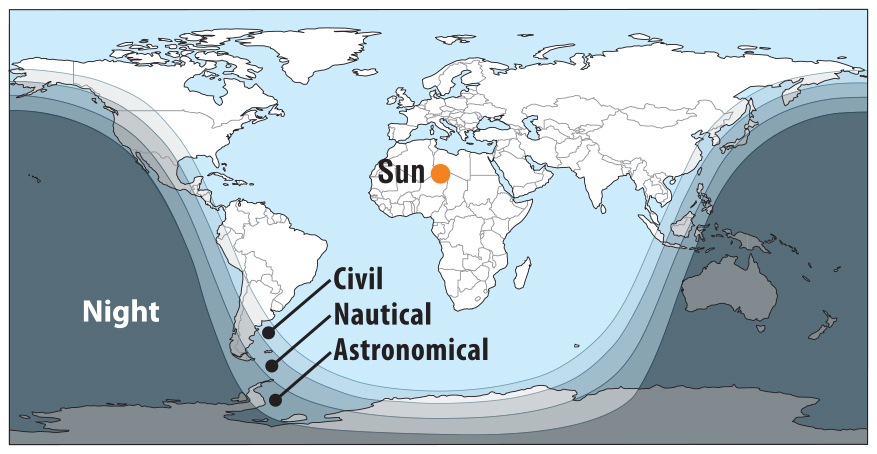At this exact time every year more than 90% of the world’s population are in sunlight

Dr Karl Kruszelnicki
Dr Karl Kruszelnicki

How come? First, about 90 per cent of all humans live in the Northern Hemisphere. Second, Earth is tilted from the vertical by about 23.5 degrees. During the June solstice (21–22 June), the North Pole is in continuous 24-hour sunlight.
The map provided shows where sunlight falls on the planet at 11.15 UTC on 8 July (a few weeks after the June solstice). Both Australia and New Zealand are in darkness but carry less than 1 per cent of humanity. Nightfall just misses the Americas, Asia, Japan and Taiwan. So 83 per cent of humanity were between dawn and dusk.

The fuzzy boundary on the map is the three twilights. Civil twilight runs from when the Sun drops below the horizon until the centre of the Sun is 6 degrees below the horizon. There is still enough light to see – another 7 per cent of humanity, bringing us to 90 per cent.
Nautical twilight runs from when the centre of the Sun drops to 12 degrees below the horizon. There’s enough light to walk around safely early in nautical twilight, but not in late nautical twilight. About 6 per cent of humanity is in nautical twilight at 11.15 UTC on 8 July, so let’s add another 3 per cent (half of 6 per cent) to our total. Now we have 93 per cent of humanity between dawn and dusk, and 3 per cent in darkness.
During astronomical twilight, the centre of the Sun drops to 18 degrees below the horizon. This is effectively night-time, so that’s another 3 per cent in darkness.

Australia, New Zealand and New Guinea are also in full darkness – another 1 per cent (total of 7 per cent).
But why pick a day a few weeks after the June solstice? Indonesia and the Philippines, near the Equator, are highly populated. They are partly in the dark on the actual June solstice. But if you give just a few more weeks for the Sun to move further south, light falls on an extra 10 million people.
On 8 July, at 8.15pm Australian Eastern Standard Time, about 93 per cent of the world’s population had enough light to see what they were doing (and 7 per cent did not). That’s not 99.164 per cent, but it’s still a surprisingly large percentage of the population.




